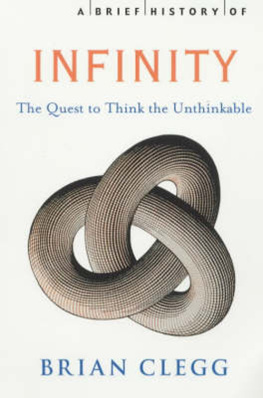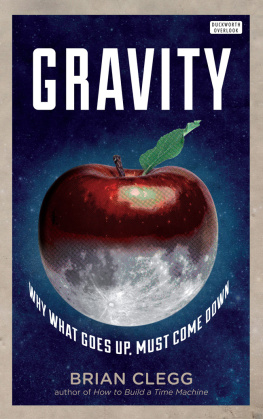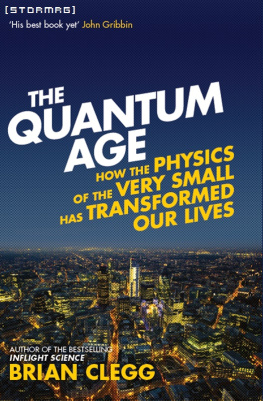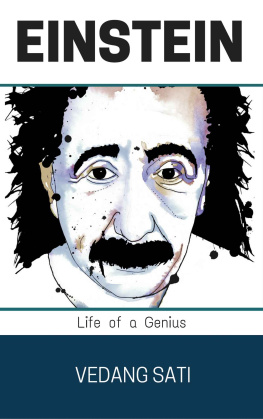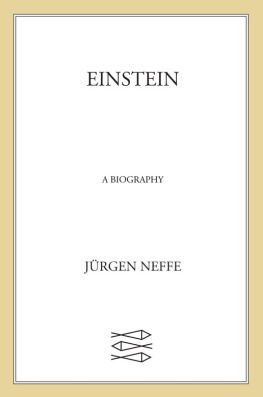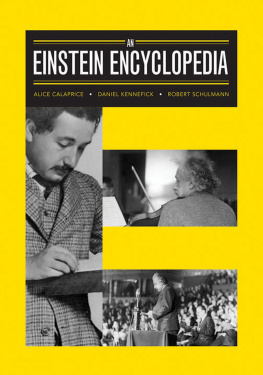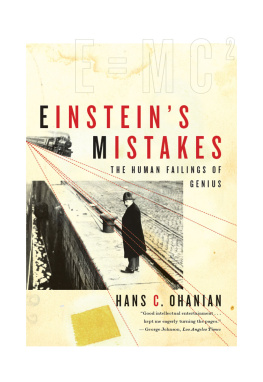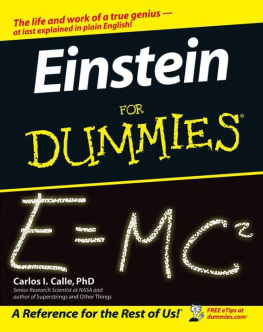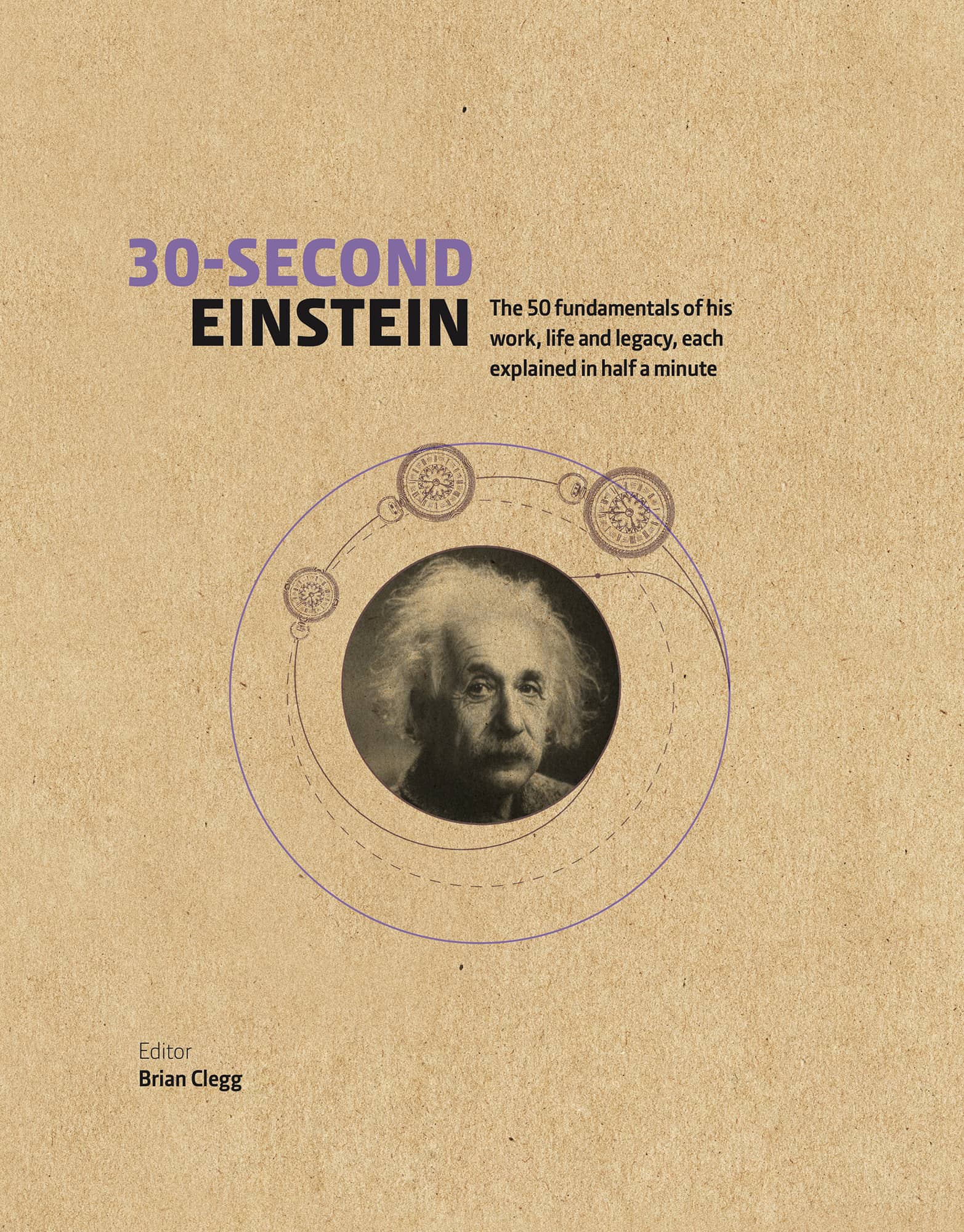30-SECOND
EINSTEIN
The 50 fundamentals of his work, life and legacy, each explained in half a minute
Editor
Brian Clegg
Contributors
Philip Ball
Brian Clegg
Leon Clifford
Rhodri Evans
Andrew May
Illustrations
Steve Rawlings

First published in the UK in 2016 by
Ivy Press
Ovest House
58 West Street
Brighton BN1 2RA
United Kingdom
www.quartoknows.com

Copyright The Ivy Press Limited 2016
All rights reserved. No part of this publication may be reproduced or transmitted in any form by any means, electronic or mechanical, including photocopying, recording or by any information storage-and-retrieval system, without written permission from the copyright holder.
British Library Cataloguing-in-Publication Data
A CIP catalogue record for this book is available from the British Library.
Digital edition: 978-1-78240-433-0
Hardcover edition: 978-1-78240-387-6
This book was conceived, designed and produced by
Ivy Press
Creative Director Michael Whitehead
Publisher Susan Kelly
Editorial Director Tom Kitch
Art Director James Lawrence
Project Editor Jamie Pumfrey
Editor Charles Phillips
Designer Ginny Zeal
Glossaries Text Brian Clegg
INTRODUCTION
Brian Clegg
Its easy to think of Albert Einstein as a lone scientific adventurer, a genius who transformed our understanding of the world. However, to quote historian of science Thony Christie, There are no lone geniuses; science is a collective, collaborative enterprise. Certainly Einstein did not work in isolation, but rather built on the work of his predecessors. Yet only Newton can rival Einsteins personal contribution to physics.
Perhaps because Einstein was the first scientist to receive the level of media adulation that he did, there are frequent attempts to belittle his work. Anyone working in science communication receives a steady stream of books and articles attempting to prove Einstein wrong. And, bizarrely, when in 2013 the Observer newspaper published a list of the top ten physicists in history, Einstein was only fourth after Newton, Bohr and Galileo. Yet while it is true that some scientists receive media attention that is totally out of proportion to their contributions, this cannot be said of Albert Einstein.
Four Major Papers
In one year, when not even an academic, he published four papers that had a huge impact. One, which won him the Nobel Prize, established the mechanism behind the photoelectric effect. That may sound insignificant, but it fired the starting gun for quantum physics. Another established the nature of Brownian motion, in which small particles such as pollen bounce around in water demonstrating the existence of atoms, which at the time was disputed. A third established the special theory of relativity. And the fourth built on special relativity to establish the equivalence of mass and energy, leading to the worlds most famous equation: E=mc2. All this occurred before Einstein went on to advance quantum physics and to explain gravity with his general theory of relativity.
Einstein was never one to go along with the crowd. He hated the regimentation of German schools, and as a teenager renounced his German citizenship. It wasnt until he was 30 that he got his first academic post. And he remained resolutely a pacifist throughout his life.

How This Book Works
Each topic is clearly and concisely explained on one page in a punchy single paragraph: the 30-Second Theory. For an even quicker overview, there is the 3-Second Thrash alongside the key idea caught in a single sentence. Then the 3-Minute Thought expands on this, addressing the consequences of a theory or drawing out a quirky, intriguing aspect of the subject. Each chapter also contains the biography of a key associate of Einstein, a fellow pioneer in the field such as Minkowski, Bohr and Bose.
To get a picture of Einsteins work we start, in Matter, with his early focus on atoms and the way he used statistics to explain their behaviour. Next comes Quantum Adventures, in which we explore his contribution to the foundations of quantum physics before getting onto his Special Theory of Relativity. This account of the way the fixed speed of light changes the relationship of space and time led him to an understanding of the relationship between matter and energy that lay behind nuclear bombs and nuclear power, which we find in a chapter on the relationship between Einstein & the World where youll find a discussion of his unlikely patent for a fridge!
Next we explore in Fighting the Quantum how Einstein challenged his contemporaries, notably Niels Bohr, on the predictions of quantum theory, leading to Einstein unwittingly uncovering the remarkable phenomenon of quantum entanglement. This came after his masterwork, the General Theory of Relativity, which leads us to a transformed understanding of Einsteins Universe.
Aptly, Einsteins work spans a range from the very small world of atoms and quantum theory to the limits of the cosmos.

MATTER
MATTER
GLOSSARY
Avogadros number Also known as Avogadros constant, this specifies the number of atoms or molecules in a mole of substance, based on the value for 12 grams of pure carbon. The number is approximately 6.022x1023. Italian scientist Amedeo Avagadro suggested in the 19th century that the volume of a gas was proportional to the number of atoms or molecules in it; when the number was established in the 20th century it was named after him.
colloid science Colloid comes from the Greek for glue, making a colloid gooey or gelatinous. Such materials are usually a suspension of insoluble particles in a different substance. Colloid science includes the movement of the suspended particles, producing Brownian motion.
convection currents When a fluid has different temperatures in different locations, the motion of the atoms or molecules in the fluid results in the faster-moving, warmer particles moving upwards and the slower, cooler particles moving downwards, producing a roughly uniform mix. The movement generated in the fluid is called a convection current and is responsible for many natural phenomena.



